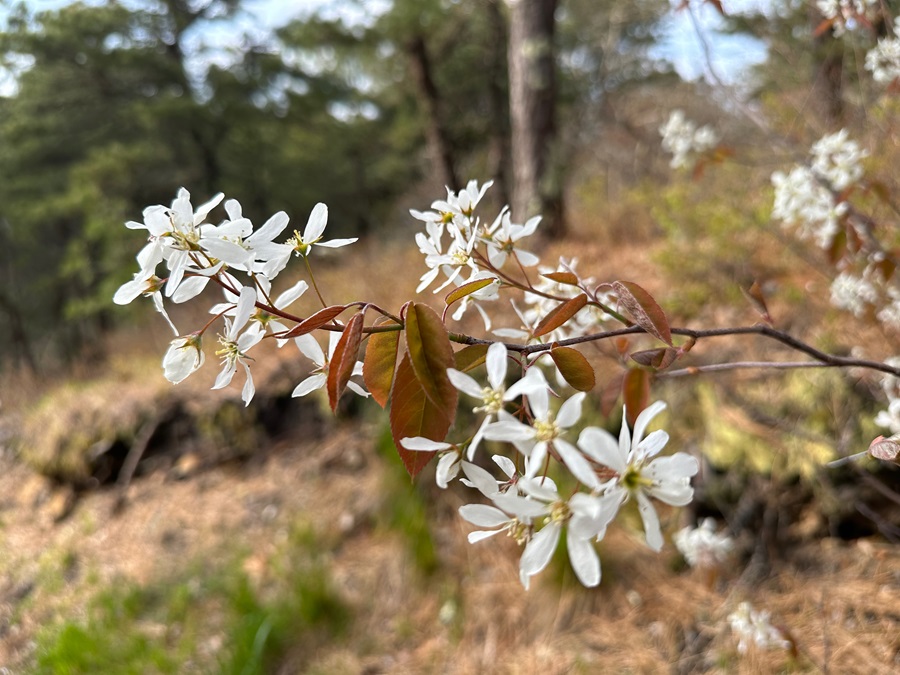
The spring-blooming shrubs and trees of the widespread, mostly North American genus Amelanchier have a long list of common names, many referring to their timing. Some people call them Juneberries because their berries ripen in June. Some call them shadbushes, because they bloom when the shad return to spawn. Most, though, call them serviceberries, maybe not realizing the blooms historically coincided with a ground thawed enough for burials.
There’s no rule saying we can’t coin new, less morbid names for Amelanchier to reflect more modernly this moment of bloom on the Outer Cape. How about the first tea tree? Or maybe the spring shuffle bush? Or better yet: The did-you-have-a-good-winter berry?
Whatever you call it, the delicate blooms of Amelanchier trees (likely Amelanchier laevis) can now be seen roadside on Route 6, wedged here and there between the ubiquitous pines and oaks. Showing up first as white dabs on the landscape as if applied with a painter’s brush, the leaves and blooms grow together into something resembling popcorn on caramel. Pictured here is a cultivar of Amelanchier x grandiflora (a native hybrid of A. laevis and A. arborea) growing in a garden on Leeward Passage in Truro. The pollinators buzzing around this specimen seem to answer: it was good, how was yours?



